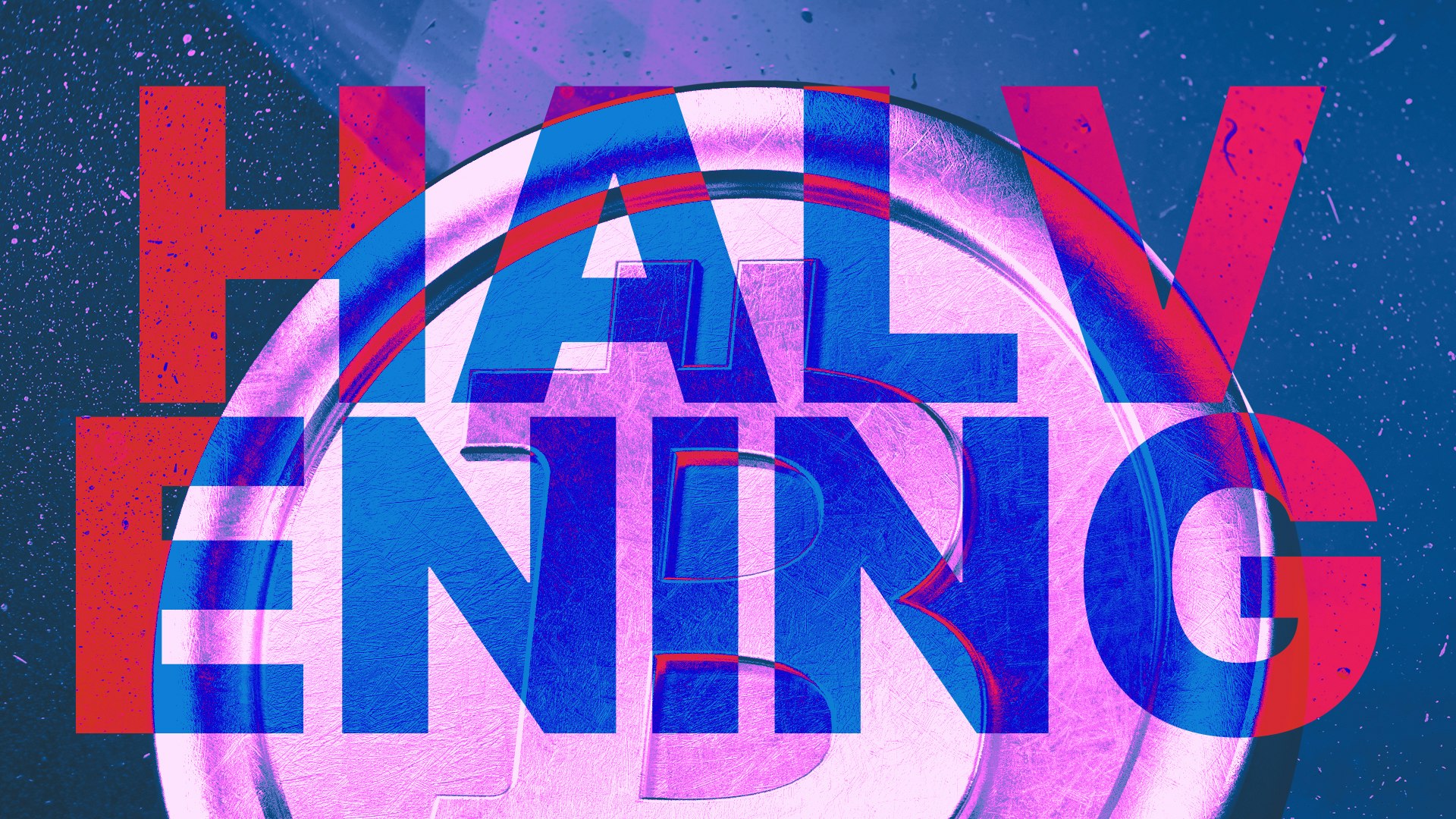Bitcoin Price Predictions: What Will Happen After the Halving?
Bitcoin price predictions for 2024 were everywhere as the Halving approached. So what do the experts say about the Bitcoin price? Should you buy Bitcoin?
In this article...
- The Bitcoin Halving can result in the price rising
- Prices have not risen right away every time, however
- What is predicted to happen after the Bitcoin Halving of 2024?

The Bitcoin Halving is upon us, so every man and his parrot is making Bitcoin price predictions. Should you buy Bitcoin (BTC) now? Is it a good time to load up on "digital gold"? What does this mean for investors? Okay deep breaths, we got you.
Current price predictions for 2024 by experts vary widely, ranging from US$60,000 to totally wild US$500,000. Let’s delve into the details and explore the price predictions for BTC in the coming months.
The Halving Event: What is it?
Bitcoin halving occurs approximately every four years, and it’s a critical event that impacts the supply dynamics of the cryptocurrency.
Mining rewards slashed in half
Currently, miners validating BTC transactions receive 6.25 BTC as a reward. However, after the halving, this reward is going to be slashed to 3.125 BTC. This reduction in mining rewards means that miners make less money, so some shut up shop and ride off into the sunset. It makes BTC more scarce, theoretically pushing prices up.
Historical trends
Previous halvings have been associated with significant price surges. The supply reduction tends to drive up demand, leading to bullish trends in the crypto market.
But of course, nobody knows what the future holds, and this isn’t necessarily a given. Prices could fall too. But based on BTC’s price history, it’s a sound educated guess to say that the price after the Halving will probably go up.
What the experts predict
is probably known as one of the most accurate veteran traders. He thinks that “longer term, Bitcoin, as a store of value, is awesome.”
However he is a stock market correction soon, which he thinks will affect the price of BTC in the short-term.
He also makes the case that the demand for BTC, thanks to the newly-introduced Spot Bitcoin ETFs, is greater than what is currently being mined. ETFs (Exchange-Traded Funds) are financial instruments that track the price of an underlying asset, in this case, BTC. When people invest in an ETF, the ETF needs to ensure it has enough actual BTC to back the money that comes in.
Say if you invest US$61,300 in a Bitcoin ETF. The ETF must acquire an equivalent amount of Bitcoin to support this investment.
To back the ETF, the fund managers go to the real market (called the spot market) and purchase BTC. This ensures that the ETF has real assets behind it.
Soloway says, “Now remember, it works both ways. So if people start selling the ETF then the fund manager have to sell Bitcoin as well.”
So if investors sell their ETFs to cover losses in say, the stock market, then the price of BTC may go down as ETF managers scramble to sell the BTC and flood the market with the cryptocurrency.
Soloway also says there is a risk of the US entering a recession. People are feeling fearful, especially when it comes to the US economy. If there’s a sudden recession or signs of rising inflation, it creates uncertainty.
Soloway acknowledges that while BTC has potential has a global store of value, currently, BTC is still considered a risk asset. This means that it moves in tandem with market sentiment. Ergo, BTC is a good long-term bet, but he thinks there will be volatility along the way there.
Eric Wade: BTC will hit US$100,000
is a cryptocurrency expert known for his accurate predictions. Wade that as the crypto market gears up for another bull run, BTC has surged by over 35% in 2024.
He makes the case that Wall Street giants have initiated a historic accumulation of BTC, unlike anything seen before. The upcoming halving event in April will further tighten Bitcoin’s supply, potentially driving its price to six figures. Collectively, these companies own more than 775,000 coins, representing over 4% of Bitcoin’s total supply.
Wade also says that with massive buying, a supply crunch is forming. Around 900 Bitcoins are created daily, while these ETFs accumulate roughly 10,000 per day. Because of these factors, he says that Bitcoin is likely to hit US$100,000.
While this prediction of US$100k aligns with , other experts are not so bullish.
Bears and Bitcoin
John Hawkins, Lecturer at the University of Canberra, has always maintained that BTC is a speculative bubble. He told , "In 2021, similar claims were made about the BTC futures ETFs as are now being made about BTC spot ETFs. Then the Bitcoin price went up for a while but later crashed."
In the same Finder report, Jonathan Habadou Solomon, Co-CEO of , says that investors need to prepare for volatility. He even says that BTC's price could drop down to US$30,000.
"Bitcoin's correlation with traditional markets, which I believe are currently overvalued, could lead to a challenging year in 2024. While I foresee the possibility of a new ATH (all-time high) around US$80,000 in 2024, I don't anticipate it reaching US$100,000 within the year, and investors should expect some volatility along the way."
Willy Woo: Bullish
is a prominent Bitcoin on-chain analyst who has been actively involved in the crypto space since 2013. His expertise lies in analysing on-chain metrics and understanding the dynamics of the Bitcoin network.
In a , Woo discusses the inventory of Bitcoin, and makes the case that a supply crunch will push prices up. He says he is optimistic about the longer-term bullishness of Bitcoin.
Conclusion: Should I buy Bitcoin?
While halving events can create short-term volatility, the long-term outlook is probably bullish. Bitcoin is poised to cross major milestones and integrate further with global finance.
Institutional interest in Bitcoin is stronger than ever. BTC ETFs are driving adoption, and this trend is likely to continue.
Bitcoin has weathered previous Halvings and emerged stronger. If history repeats, we can expect price surges in the coming months.
Timing matters. If you believe in Bitcoin’s long-term potential, consider accumulating during any price dips.

Frequently asked questions
Who is Satoshi Nakamoto, and how does their influence impact BTC?
Satoshi Nakamoto is the pseudonymous creator of Bitcoin. Their identity remains unknown, but their groundbreaking whitepaper introduced the concept of a decentralised, peer-to-peer digital currency. Nakamoto’s vision laid the foundation for the entire crypto market.
What is the current state of the crypto market?
The crypto market is dynamic and ever-evolving. It encompasses thousands of digital assets beyond Bitcoin (BTC). Investors closely monitor price movements, market capitalisation, and trends to make informed decisions
How does market capitalisation relate to BTC?
Market capitalization (market cap) represents the total value of all outstanding coins or tokens in circulation. For Bitcoin, it’s calculated by multiplying the current price by the total number of BTC in existence (approximately 19 million Bitcoin).
What are the historical price trends for BTC?
Bitcoin’s historical price has seen remarkable volatility. From its beginnings to reaching all-time highs, understanding past price movements provides insights into potential future trends.
What is the current price of Bitcoin (BTC)?
As of April 09, 2024, the price of Bitcoin hovers around AU$107,700 per BTC. However, keep in mind that crypto prices can change rapidly.
Is BTC accepted as legal tender anywhere?
El Salvador made history by adopting Bitcoin as legal tender in September 2021. Other countries are closely observing this experiment, and discussions about broader acceptance continue.
How do moving averages impact Bitcoin price predictions?
Moving averages (such as the 50-day or 200-day moving average) help smooth out price fluctuations. Analysts use them to identify trends and potential buy/sell signals.
Why is BTC considered a peer-to-peer digital currency?
BTC operates on a decentralised network where transactions occur directly between users without intermediaries (like banks). This peer-to-peer nature ensures transparency and security.
Should I buy Bitcoin now or wait for short-term fluctuations?
Timing the market perfectly is challenging. Some investors “buy the dip,” while others accumulate gradually. As with any cryptocurrency price prediction, nobody knows for sure what will happen in the future. Bitcoin BTC price can fluctuate very quickly.
What role do central banks play in the BTC ecosystem?
Central banks worldwide don’t directly impact Bitcoin, however their actions might influence overall crypto sentiment.
What is the Bitcoin network?
The BTC network is a decentralised system that enables peer-to-peer transactions using a digital currency called BTC.

Suggested Articles
What is Bitcoin (BTC)? What is "Digital Gold" Used For?
What is Bitcoin? It is a digital currency that can be traded, exchanged, and used as a form of payment independent of central banks and governments.What is Ethereum? What is ETH Used For?
Ethereum is a decentralised blockchain-based open-source software platform that allows for the development of decentralised applications (dApps).What Is Crypto? How do Cryptocurrencies Work?
Crypto has become incredibly popular. But how does this digital currency work? And are there cryptos other than Bitcoin?Browse by topic
CoinJar’s digital currency exchange services are operated by CoinJar Australia Pty Ltd ACN 648 570 807, a registered digital currency exchange provider with AUSTRAC.
CoinJar Card is a prepaid Mastercard issued by EML Payment Solutions Limited ABN 30 131 436 532 AFSL 404131 pursuant to license by Mastercard. CoinJar Australia Pty Ltd is an authorised representative of EML Payment Solutions Limited (AR No 1290193). We recommend you consider the and before making any decision to acquire the product. Mastercard and the circles design are registered trademarks of Mastercard International Incorporated.
Google Pay is a trademark of Google LLC. Apple Pay is a trademark of Apple Inc.
This site is protected by reCAPTCHA and the and apply.